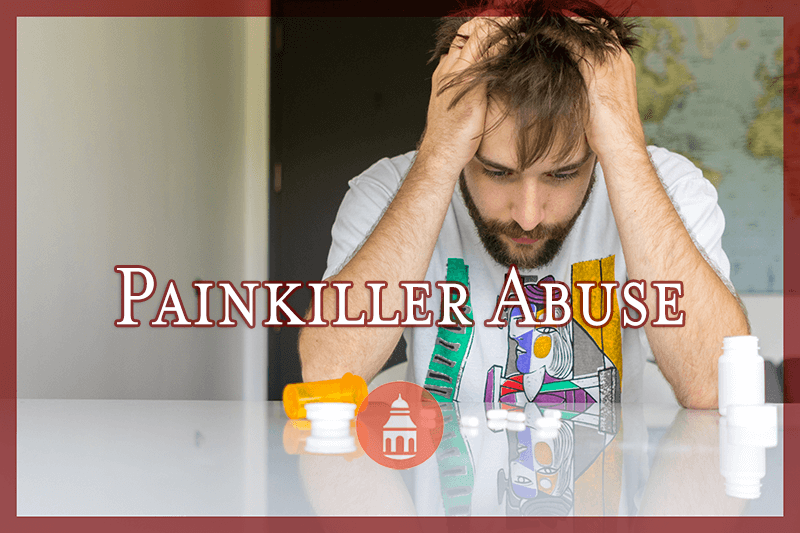
Painkiller abuse is very common in the US and around the world. These medications are at the top of the list of most commonly abused drugs, along with marijuana. Drugs in this classification are highly addictive. The number of overdoses associated with them is considerably high with 16,500 people dying in 2010 from overdoses related to narcotic pain relievers like Opana, Vicodin, and OxyContin.
What Are Painkillers?
Painkillers are a group of drugs prescribed to patients who have moderate to severe pain. They classify as narcotics. They act on the opiate receptors in the brain that control a person’s perception of pain. Painkillers stimulate the area of the brain responsible for reward as well. Painkillers cause a variety of effects for the individuals who take them, including:
- Pain reduction
- Euphoria
- Drowsiness
- Lightheadedness
Pain relievers that are commonly abused are known as opioids. They are derived from opium-like compounds and designed to respond in the nervous system in the same manner as opium from poppies. Some of these compounds are actually more powerful than heroin.
- Oxycodone
- Hydrocodone
- Meperidine
- Fentanyl
- Hydromorphone
- Oxymorphone
Who Abuses Painkillers?

While more and more people of all ages are using painkillers, even older adults, teenagers and young adults most commonly use the drugs. In fact, they are the second most commonly abused drug by teens besides marijuana. Close to half of teens who abuse prescription drugs choose painkillers. Many teens believe taking a prescription pain reliever is safer than taking a street drug. Per one study, nearly 50 percent of all teens surveyed thought prescription drugs were safer than nonprescription drugs.
A 2007 study noted by the Foundation for a Drug-Free World found that one in 10 high school seniors in the US abused prescription painkillers; the actual number may be higher since some may not admit to such use. In 2013, slightly over 2.8 million people began using drugs and 54.1 percent were under the age of 18. Every day in the US, 2,500 youth try prescription painkillers for the first time.
The younger generation is not the only one abusing painkillers. Because of the aging baby boomer population, more people in their 50s and older are abusing prescription drugs. The rate for drug abuse in this population has been rising steadily over the years.
By gender, men are more likely to abuse prescription painkillers. Men are actually more likely to abuse all substances when compared to women. Men have a higher rate of overdoses resulting in emergency rooms visits or death. Despite higher rates of abuse among men, women are just as likely to become addicted to pain relievers.
The National Institute on Drug Abuse states that there may be a gender-related reason behind the high rate of opioid prescriptions among women of reproductive age. For instance, women tend to be more sensitive to pain than men. The studies indicate women may be more likely to take an opioid to relieve pain without obtaining a prescription. Additionally, research suggests women are more likely to misuse prescription opioids to treat mental health issues like anxiety. It also appears that those who experience hardships or serious traumatic events, like rape or abuse, are more likely to abuse painkillers.
The Beginnings of Abuse and Addiction
People initiate into painkiller abuse in a variety of ways. Some individuals start with a legitimate prescription for the medication. If the pills no longer reduce their pain, they may up the dosage without consulting their doctor. Others enjoy the euphoria the pills can provide at higher doses, or they may begin taking the painkillers alongside other substances, such as alcohol or marijuana. Others first try painkillers recreationally, perhaps after being offered them at a party by a friend.
Statistics provided by the Centers for Disease Control and Prevention show that doctors and other medical professionals wrote 259 million prescriptions for opiate pain relievers in 2012. This is enough for every single adult in America to have a bottle of painkillers. These statistics indicate that overprescribing of painkillers is common, and that is why more states are implementing more stringent laws regarding use of these drugs.
Sometimes, the prescription is legitimate, but the person may take them for longer than needed. In 2009, a study conducted by Dr. W. Michael Hooten, an anesthesiologist at the Mayo Clinic in Rochester, Minnesota, tracked close to 300 individuals who were given narcotic pain relievers for the first time. These people were given short-term prescriptions for the drugs. Throughout this investigation, researchers reported that close to one in every four – or 25 percent – of all individuals prescribed the drug took it for longer than prescribed. Researchers discovered that 21 percent of all patients who were prescribed short-term opiate pain relievers extended their prescription for 3-4 months. Additionally, 6 percent of those prescribed the narcotic ended up taking it for longer than four months.
Whether a person uses the drug, whether as prescribed or by abusing it, the brain becomes accustomed to its presence. Over time, the brain requires it just to function normally, and this dependence often leads to addiction. Some factors increase a person’s risk for becoming addicted to painkillers, such as a family history of addiction or an environment that encourages substance abuse. The amount of time it takes for addiction to form will vary according to each individual and the level of abuse.
Effects of Painkiller Abuse
Opioids also bring long-term effects, which vary based on the follow factors:
- How long the drug was used
- How often the drug was used
- Route of administration, whether snorted, injected, or swallowed
Mild effects of prescription painkillers abuse are possible, even if the person is not a frequent user. One of the most notable effects of opioid abuse is the intense high a person can achieve, which varies based on the route of administration. These medications cause muscles to relax, and lethargy may occur. Pinpoint pupils and decreased reaction times may be common. It is possible for a person who abuses painkillers to experience diarrhea, vomiting, and nausea as a result of how the drugs stimulate the nerves in the intestines. Painkillers may cause muscle spasms due to the nerves reacting to the drug’s stimulation.
Injecting opioids often leads to track marks or open wounds where the needle was inserted, and these sites can become infected. A contaminated needle can cause serious, possibly life-threatening infections. Injecting drugs also leads to serious complications with the cardiovascular system, such as collapsed veins, abscesses in the heart, and death of the cells in the walls of the veins and organs. It increases a person’s risk of having a heart attack as well. Additionally, the person is at risk for contracting HIV, hepatitis, and other serious diseases when sharing needles.
Snorting opioids painkillers has the potential to damage the mucosal tissue in the nose and nasal passages. It is possible for painkillers to damage the septum of the nose as well. A person could even lose their sense of smell due to the damage.
Painkillers can do extensive damage to neurotransmitters in the brain. Studies indicate these changes may occur in as little as 24 hours after exposure. With high-dose, prolonged use, painkillers abuse can contribute to psychosis and other mental health disorders.
Death can occur from opiates due to a decrease in respiration and changes in heart rate. The number of deaths from opioids is higher than the number of deaths from cocaine and heroin combined. Over the past 11 years, the number of deaths from prescription narcotics has increased tremendously. In fact, between 1999 and 2010, America saw a 400 percent increase in women overdosing and a 265 percent increase in men overdosing.
Treatment Options
 Fortunately, for those who become addicted to pain relievers, help is available. As opioids, professional treatment is needed to withdraw from the medications. If a person attempts to withdraw from painkillers on their own, relapse is likely due to the intensity of the withdrawal symptoms. As a result, medical detox is always recommended for painkiller withdrawal. Oftentimes, replacement medications, such as methadone or buprenorphine, are used during the withdrawal process for opioid addictions.
Fortunately, for those who become addicted to pain relievers, help is available. As opioids, professional treatment is needed to withdraw from the medications. If a person attempts to withdraw from painkillers on their own, relapse is likely due to the intensity of the withdrawal symptoms. As a result, medical detox is always recommended for painkiller withdrawal. Oftentimes, replacement medications, such as methadone or buprenorphine, are used during the withdrawal process for opioid addictions.
After detox, individuals should engage in a complete treatment program that includes comprehensive therapy. Inpatient programs tend to be better for those with more serious addictions and those who struggle to avoid the negative influences that led to the addiction. Inpatient programs give the person round-the-clock monitoring and support. They take the person away from triggers, temptations, and other distractions that hinder the recovery process.
An outpatient program for painkiller abuse and addiction allows clients to visit the treatment facility on a regular, often daily, basis for therapy, maintenance drugs, and medical monitoring. This allows clients to continue to work, attend school, and live at home. It is best suited for individuals with mild to moderate addictions who have strong support systems at home.
Regardless of the type of program chosen, therapy makes up the core of addiction treatment. Available in a variety of forms, most addiction treatment facilities offer some form of Cognitive Behavioral Therapy to transform negative thoughts into positive ones, enabling clients to believe in their ability to effectively recover from addiction. Treatment continues with relapse prevention techniques and aftercare planning, ensuring clients have a firm foundation as they enter new lives in recovery.
